Search Images
Browse Content (p. 1243)
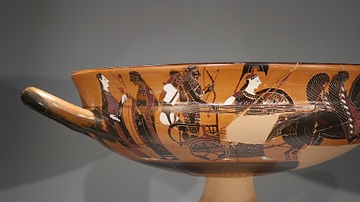
Image
Hercules in Chariot
A black-figure kylix (drinking cup) depicting Hercules being driven in a chariot by Hermes. Athena is to the right. Tarentum, southern Italy, 550-520 BCE. (National Archaeological Museum, Taranto, Italy)
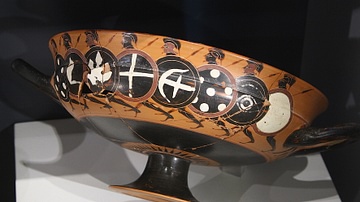
Image
Kylix with Black-Figure Hoplites
A black-figure kylix (drinking cup) with Greek hoplite warriors. Tarentum, 550-520 BCE.
(National Archaeological Museum, Taranto, Italy)
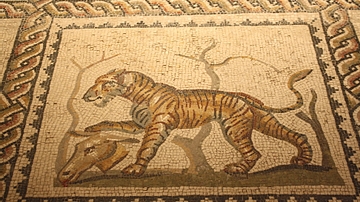
Image
Tiger Mosaic, Tarentum
A panel from a larger floor mosaic depicting a hunting tiger, Tarentum, southern Italy, Late 2nd, early 3rd century CE. (National Archaeological Museum of Taranto, Italy)
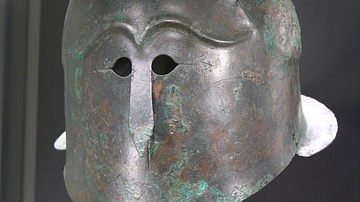
Image
Crested Bronze Helmet, Rutigliano
A crested bronze helmet, Rutigliano (Bari), southern Italy. 430-400 BCE. (National Archaeological Museum of Taranto, Italy)
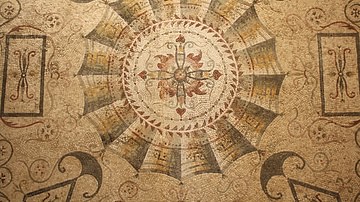
Image
Geometrical Mosaic, Tarentum
A Roman mosaic flooring with geometrical designs, Tarentum, southern Italy. 2nd century CE. (National Archaeological Museum of Taranto, Italy)
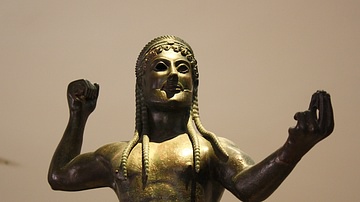
Image
Bronze Zeus, Tarentum
A bronze statue of Zeus, Tarentum, southern Italy c. 530 BCE. (National Archaeological Museum of Tarento, Italy)
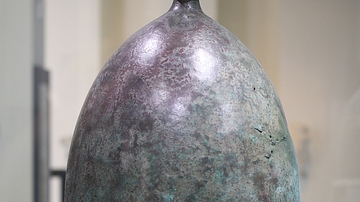
Image
Bronze Helmet, Tarentum
A bronze helmet with cheek-pieces. 3rd century BCE, Tarentum, southern Italy. (National Archaeological Museum of Taranto, Italy)
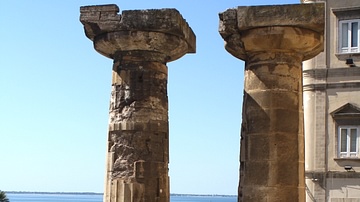
Image
Archaic Columns, Tarentum
Two columns, all that remains of an Archaic temple dedicated to Poseidon at Tarentum, southern Italy.

Image
Mammoth Steppe
The Ubsunur Hollow Biosphere Reserve, depicted here, contains some of the last stretches of the so-called mammoth steppe; an ecosystem in which the woolly mammoth thrived during the Pleistocene.
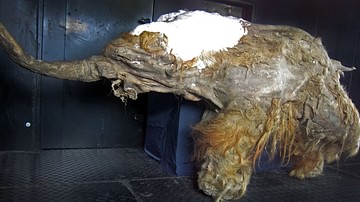
Image
Young Woolly Mammoth Carcass
This carcass of a young woolly mammoth, nicknamed 'Yuka', is on display in Moscow after being found in an astonishingly good condition in Siberia. It died around 39,000 years ago and was between 6 and 11 years old.